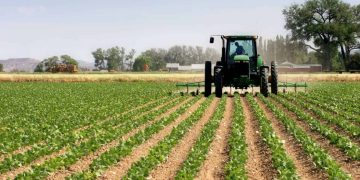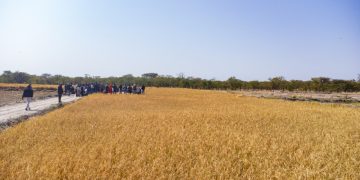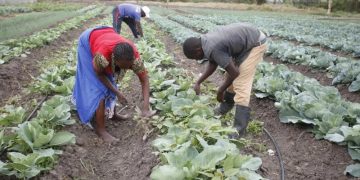
The Namibian Livestock and Livestock Products Board says beef exports declined by 51.4% to 1.43 million in 2025, this is compared to the 2.94 million exported during the same period in 2024.
The drop in beef exports was part of a broader contraction across most livestock sectors, driven by reduced animal availability following drought-induced destocking in 2024.
“Y-o-y, beef exports totaled 1 425 615 kg during the period under review, a significant decrease compared to the 2 936 183 kg exported during the same period in 2024,” said LLPB Statistician: Trade & Strategic Marketing, Fransina Angula.
She further explained that cattle marketing plunged by 58% year-on-year to 37,577 animals in Q1 2025, down from 89,507. This steep decline is linked to the 2024 drought, which forced many farmers to market large numbers of cattle, leaving few market-ready animals for the current year.
Furthermore, live cattle exports dropped significantly by 79.8%, and throughput at export-approved abattoirs fell by 24.2%. Slaughtering at domestic abattoirs also contracted by 22%. However, beef prices increased due to limited supply. B2-grade beef in the s-VCF averaged N$69.89/kg, up N$9.02 from the previous year while weaner prices climbed 17.7% to N$29.13/kg.
Angula also said that despite the downturn in volume, Namibia maintained key export markets, with the EU accounting for 84.2% of beef exports, followed by Norway (10.2%), the UK (3.4%), China (1.7%), and South Africa (0.8%).
“During the first quarter of 2025, 281 906 kg of hides and skins in the form of bovine wet blue and processed were exported to South Africa, Zimbabwe, the UK and China. Hides and Skins imports on the other hand totaled 165,976kg during the quarter under review,” she said
Similarly, the sheep sector recorded steep declines in Q1, mainly due to a shortage of market-ready animals. Slaughtering at export-approved abattoirs dropped 53.9%, while local abattoirs saw a 21.6% decline. Live sheep exports also fell by 44.2%.
According to Angula, despite the supply challenges, producer prices rose. The Namibian A2 lamb carcass price averaged N$88.74/kg up from N$76.52/kg in Q1 2024 while the s-VCF auction lamb price increased by 18.6% to N$36.38/kg.
“Mutton exports during the period under review dropped due significant reductions in throughput at export approved abattoirs and declined by 63.3 percent. As a result, only 82,707kg of lamb and mutton was exported to South Africa and Botswana and Norway, lower than the 2024 exports of 225,411kg,” she said
In the goat sector, total marketing fell by 15.1%, with only 20,758 goats marketed compared to 24,442 in Q1 2024. This contraction was again due to reduced availability of animals. The lamb auction price averaged N$39.57/kg during the quarter, she said.
On the other hand, the pork sector was the only segment to show growth. A total of 12,324 pigs were marketed at LLPBN-approved abattoirs in Q1 2025, a slight increase from 12,255 pigs a year earlier. Pork imports surged by 74.1% to 1,957,886kg. Spain led the supply with 30.4% of the imports, followed by China (17.8%) and South Africa (17.3%). The rest came from Botswana, the Netherlands, the UK, France, and Portugal.
“Although imports are dominant in the market, the Pork Market Share Promotion Scheme, administered by the LLPBN continues to assist local producers in maintaining significant market share,” she said.
She further explained that in the poultry sector, domestic slaughter reached 4,418,322 chickens in Q1 2025, and local egg production totalled 23,634,209 eggs. The country also imported 135,597 day-old chicks and 1,799 layer hens for breeding.
Namibia also exported 3,048,643kg of processed chicken products to South Africa, Botswana, Zimbabwe, Zambia, and the DRC. Meanwhile, imports of poultry products reached 6,659,199kg. Poland supplied 64.2% of these imports, followed by Brazil (18.8%), South Africa (12.4%), and a combined 4.7% from various countries including Argentina, Spain, Ireland, Thailand, and Ukraine.













